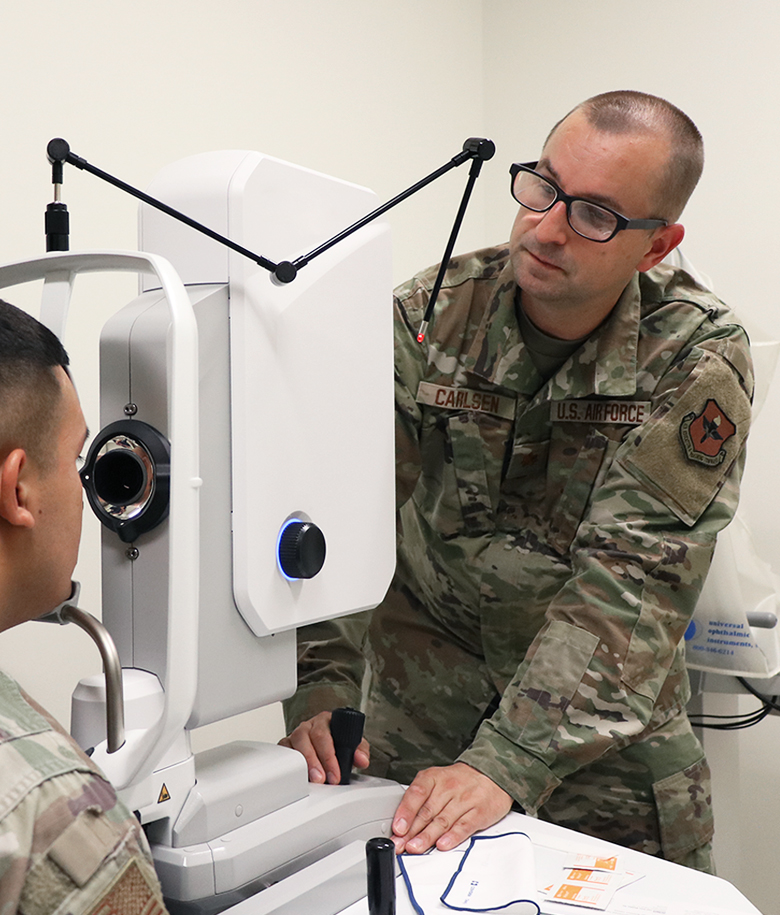Experience Personalized Care with Opticore Optometry in Chino
Exploring the most recent Technological Developments in Optometry and What They Mean for Eye Doctors
In the ever-evolving area of optometry, recent technological developments are reshaping just how practitioners approach eye care. From the accuracy of Optical Coherence Tomography to the nuanced understandings supplied by AI-driven diagnostic tools, these advancements are setting brand-new requirements in person evaluation and treatment. Teleoptometry is poised to redefine ease of access, guaranteeing that know-how transcends geographical constraints. As these developments penetrate the method, eye doctors are confronted with the challenge of embracing these tools to boost individual results. The inquiry stays: just how will these technical shifts redefine the functions and obligations within the career?
Developments in Diagnostic Devices
Advancing the area of optometry, innovations in diagnostic tools have actually transformed the method eye care specialists examine and identify visual disabilities and eye conditions. The past decade has experienced considerable technological innovations, allowing even more precise and detailed examinations.
An additional secret innovation is the intro of advanced corneal topography systems, which map the surface curvature of the cornea with accuracy. These tools are particularly valuable for suitable contact lenses and detecting corneal conditions. Electronic retinal imaging has actually changed conventional ophthalmoscopy, using detailed, breathtaking views of the retina that facilitate complete aesthetic evaluations.
The growth of wavefront aberrometry has actually additionally been crucial, making it possible for the analysis of refractive errors with unequaled accuracy (Eye Doctor Optometrist). This technology assists in personalizing rehabilitative lenses and enhancing medical results for refractive surgical procedures. Collectively, these analysis developments encourage eye doctors to supply superior person treatment, making sure early intervention and tailored treatment techniques, ultimately boosting aesthetic health and wellness end results
AI in Person Administration
Building on the foundation of innovative diagnostic tools, the consolidation of synthetic intelligence (AI) in individual monitoring represents a transformative jump for optometry. AI systems are increasingly used to boost efficiency, accuracy, and personalization in client care.
In addition, AI-driven systems help with streamlined client interactions and management procedures. Automated organizing, digital appointments, and individualized follow-up strategies not just boost client contentment but likewise enhance time administration for specialists. These systems can triage patients based upon the urgency of their problems, making certain that those in critical demand receive timely attention.
Additionally, AI improves decision-making by giving optometrists with evidence-based suggestions and therapy pathways. By incorporating data from digital wellness documents, AI devices provide insights that inform clinical decisions, reducing the threat of errors and enhancing individual outcomes. As AI remains to evolve, its role in individual monitoring will likely expand, improving the landscape of optometric treatment.
Advancements in Retinal Imaging
In the world of optometry, retinal imaging has actually experienced exceptional technical innovations that are enhancing analysis abilities and client care. Innovations such as Optical Comprehensibility Tomography (OCT) and fundus digital photography have reinvented just how eye doctors examine the retina and picture.
Boosted imaging methods like OCT angiography are more refining analysis accuracy. This non-invasive method maps blood flow in the retina, supplying essential insights into vascular health without the demand for dye shots. Additionally, adaptive optics modern technology is being integrated into retinal imaging systems to deal with eye aberrations, providing unmatched image quality. Such advancements help with the recognition of min retinal adjustments that can represent illness progression.
Additionally, innovations in expert system are boosting retinal imaging by allowing automated evaluation of large datasets. These systems aid eye doctors in determining patterns a measure of pathology, thereby improving diagnostic accuracy and effectiveness. Jointly, these innovations are changing retinal imaging into a cornerstone of modern eye treatment, enhancing results and increasing restorative possibilities.
Teleoptometry's Growing Duty
Teleoptometry is significantly becoming an essential component of eye care, driven by improvements in electronic interaction and analysis devices. As optometry embraces electronic improvement, teleoptometry facilitates remote assessments, allowing eye doctors to prolong their services past traditional borders. This is especially advantageous in underserved and country locations where access to specialized eye care is often restricted. By leveraging high-resolution video conferencing and progressed retinal imaging, eye doctors can perform thorough eye examinations from afar, making sure timely diagnosis and treatment.
The combination of expert system (AI) additional improves teleoptometry, making it possible for the evaluation of visual information and aiding in the detection of eye problems such as glaucoma and diabetic retinopathy. AI-powered algorithms can quickly analyze complicated imaging information, providing optometrists with useful understandings that bolster clinical decision-making.
In addition, teleoptometry supports continuity of care through smooth integration with electronic health records (EHRs), enabling eye doctors to maintain detailed client backgrounds. This makes sure that patients get customized and consistent treatment also when talking to different specialists.
Regardless of these benefits, obstacles continue to be, including guaranteeing information safety and managing client expectations. However, teleoptometry stands for a considerable stride in the direction of more obtainable, reliable, and patient-centered eye care. As innovation develops, its role is poised to broaden even more.

Future Fads in Eye Treatment
A myriad of innovative patterns is readied to reshape the future of eye treatment, driven by technical innovations and the developing demands of clients. One considerable pattern is the combination of expert system (AI) in diagnostics, which promises to enhance the accuracy and performance of eye examinations. AI algorithms can assess huge amounts of information from retinal images, potentially spotting conditions like diabetic retinopathy and glaucoma earlier than typical approaches.
Moreover, personalized medication is getting traction in optometry, with hereditary screening informing customized treatment strategies. This method intends to maximize individual results by customizing interventions to specific hereditary profiles. Wearable innovation, such as clever contact lenses, is additionally coming up, providing real-time monitoring of intraocular pressure this website or glucose levels, hence providing constant understandings into systemic and eye health.
The fostering of increased fact (AR) and virtual fact (VR) in training and individual education is home an additional arising trend. These technologies supply immersive experiences that can boost understanding and abilities both for clients and eye doctors. As these patterns progress, eye doctors must remain abreast of technological improvements to offer innovative care, making certain enhanced person outcomes and satisfaction in the vibrant landscape of eye care.
Conclusion

Collectively, these analysis innovations empower optometrists to supply premium patient treatment, making sure very early treatment and tailored treatment approaches, eventually boosting aesthetic health outcomes.

As these technologies proceed to progress, optometrists should adapt and include them right into practice, eventually optimizing process efficiency and boosting the criterion of view publisher site eye treatment delivered to patients.